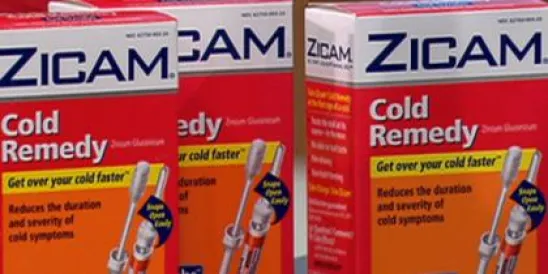In Matrixx Initiatives, Inc. v. Siracusano, No. 09-1156, 2011 WL 977060 (U.S. Mar. 22, 2011), the United States Supreme Court (Sotomayor, J.) held unanimously that the materiality of an alleged false or misleading statement or omission for purposes of pleading a violation of Section 10(b) of the Securities Exchange Act of 1934, 15 U.S.C. § 78j(b), and Securities & Exchange Commission Rule 10b-5, 17 C.F.R. § 240.10b-5, is inherently fact-specific, depending upon whether a “reasonable investor” would have viewed the relevant information “as having significantly altered the total mix of information made available.” The Supreme Court declined to apply a “bright-line rule” that only “statistically significant” information regarding the safety of drug products is sufficiently material to support a Rule 10b-5 claim against a drug manufacturer based on a failure to disclose. This decision reaffirmed prior Supreme Court precedents holding that materiality is highly fact-specific, although it also made clear that the test of whether information is material is based upon an objective standard of a “reasonable investor.” The Court left open the question of whether a statistically significant reaction by the stock market in response to a corrective disclosure is dispositive to the question of materiality.
The case centered around defendants and petitioners, Matrixx Initiatives, Inc., and three of its executives (collectively “Matrixx”). Through a wholly owned subsidiary, Matrixx develops, manufactures, and markets over-the-counter pharmaceutical products. Zicam Cold Remedy (“Zicam”), the product at issue in this case, was one of Matrixx’s products and accounted for 70% of Matrixx’s sales. Plaintiffs and respondents, a class of individuals who purchased Matrixx securities between October 22, 2003, and February 6, 2004, alleged that Matrixx’s statements touting the virtues and safety of Zicam and its strong product sales were misleading in light of reports that Matrixx had received, but did not disclose, about consumers who had lost their sense of smell (a condition called anosmia) after using Zicam.
Defendants moved to dismiss the complaint, arguing that plaintiffs had failed to plead the elements of a material misstatement or omission and scienter. The United States District Court for the District of Arizonagranted the motion to dismiss. The district court held that plaintiffs failed to allege a “statistically significant correlation between the use of Zicam and anosmia so as to make failure to public[ly] disclose complaints … a material omission.” The district court similarly agreed that plaintiffs failed to plead with particularity facts giving rise to a strong inference of defendants’ scienter. The district court noted that the complaint failed to allege that Matrixx disbelieved its statements about Zicam’s safety or that any of the defendants profited or attempted to profit from Matrixx’s public statements. Plaintiffs appealed.
The United States Court of Appeals for the Ninth Circuit reversed. Noting that “[t]he determination [of materiality] requires delicate assessments of the inferences a ‘reasonable shareholder’ would draw from a given set of facts and the significance of those inferences to him,” the Court of Appeals held that the district court had erred in requiring an allegation of statistical significance to establish materiality. It concluded, to the contrary, that the complaint adequately alleged “information regarding the possible link between Zicam and anosmia” that would have been significant to a reasonable investor. Turning to scienter, the Court of Appeals concluded that withholding reports of adverse effects of and lawsuits concerning the product responsible for the company’s remarkable sales increase is “an extreme departure from the standards of ordinary care,” giving rise to a strong inference of scienter. The United States Supreme Court granted certiorari.
The Supreme Court affirmed. The Court noted its decision in Basic, Inc. v. Levinson, 485 U.S. 224 (1988), where it held that Section 10(b)’s materiality requirement is satisfied when there is “a substantial likelihood that the disclosure of the omitted fact would have been viewed by the reasonable investor as having significantly altered the ‘total mix’ of information made available.” Relying upon this language, the Supreme Court held that Matrixx’s bright-line rule — that adverse event reports regarding a pharmaceutical company’s products are not material absent a sufficient number of such reports to establish a statistically significant risk that the product is causing the events — would “artificially exclud[e]” information that “would otherwise be considered significant to [a reasonable investor’s] trading decision.” The Supreme Court noted that medical experts and the United States Food and Drug Administration rely upon evidence other than statistically significant data to establish an inference of causation, and, hence, reasonable investors could likewise act on such information. Thus, the Supreme Court held and reaffirmed its previous decision that the proper standard is whether a reasonable investor would have viewed the non-disclosed information “as having significantly altered the ‘total mix’ of information made available.” The Supreme Court clarified that something more than the mere existence of adverse event reports is needed to satisfy the standard, but that that something more is not limited to statistical significance and can come from the source, content and context of the reports.
Applying Basic’s “total mix” standard to the facts of the case, the Supreme Court observed that (1) Matrixx received reports from medical experts and researchers that plausibly indicated a reliable causal link between Zicam and anosmia; (2) consumers likely would have viewed Zicam’s risk as substantially outweighing its benefit; (3) viewing plaintiffs’ complaint’s allegations as a whole, the complaint alleged facts suggesting a significant risk to the commercial viability of Zicam; and (4) Matrixx told the market that revenues were going to rise 50 and then 80 percent when it had information indicating a significant risk to its leading revenue-generating product, Zicam, and also publicly dismissed reports linking Zicam and anosmia. Based upon these facts and others, the Supreme Court held that it was substantially likely that a reasonable investor would have viewed this information “as having significantly altered the ‘total mix’ of information made available.” The Supreme Court held further that plaintiffs had adequately pleaded materiality and that the allegations of the plaintiffs’ complaint sufficed to “raise a reasonable expectation that discovery [would] reveal evidence” satisfying the materiality requirement, and to “allo[w] the court to draw the reasonable inference that the defendant is liable.”
The Supreme Court also held that plaintiffs and respondents had adequately plead the element of scienter, “a mental state embracing intent to deceive, manipulate, or defraud.” The Supreme Court first noted, “without deciding,” that the scienter requirement may be satisfied by a showing of “deliberate recklessness.” The Supreme Court then held that under the Private Securities Litigation Reform Act of 1995, 15 U.S.C. § 78u-4(b), a complaint adequately pleads scienter “if a reasonable person would deem the inference of scienter cogent and at least as compelling as any opposing inference one could draw from the facts alleged.” In application, the Supreme Court held that Matrixx’s proposed bright-line rule requiring an allegation of statistical significance to establish a strong inference of scienter was flawed. Rather, the allegations in plaintiffs’ complaint, taken collectively, gave rise to a “cogent and compelling” inference that Matrixx elected not to disclose adverse event reports, not because it believed they were meaningless but because it understood their likely effect on the market. Thus, the Supreme Court held that a “reasonable person” would deem the inference that Matrixx acted with deliberate recklessness “at least as compelling as any [plausible]opposing inference.”
The Supreme Court’s unanimous opinion reaffirms the relatively low threshold for pleading materiality for a securities fraud claim under Section 10(b) and Rule 10b-5, as well as the “reasonable investor” test for measuring materiality. The Court left unanswered whether a statistically significant reaction by the stock market in response to a corrective disclosure is dispositive of materiality. The decision, though, does not undermine the general view of defendants that the absence of a statistically significant stock market reaction to a corrective disclosure proves the immateriality of the disclosed information, whereas theexistence of a statistically significant stock market reaction may be indicative, but is not dispositive, of the information’s materiality.



 />i
/>i

